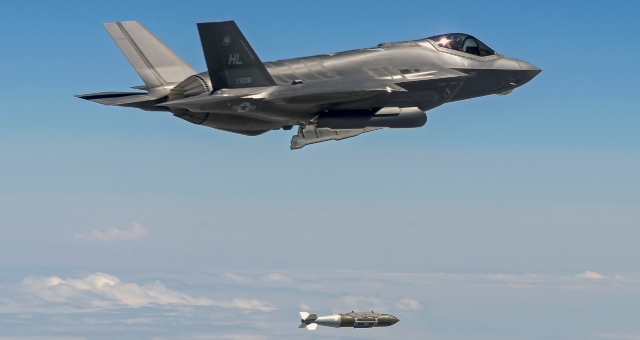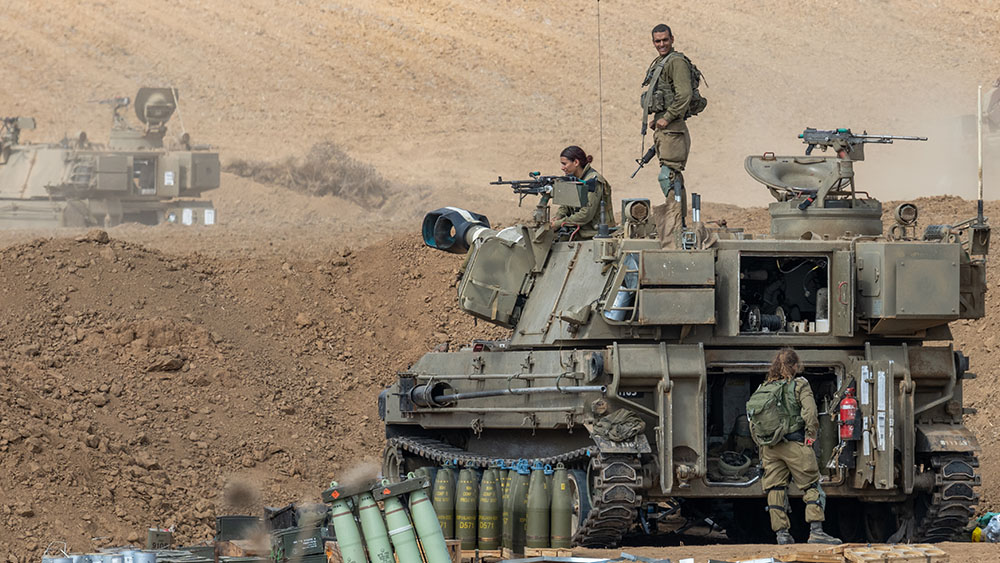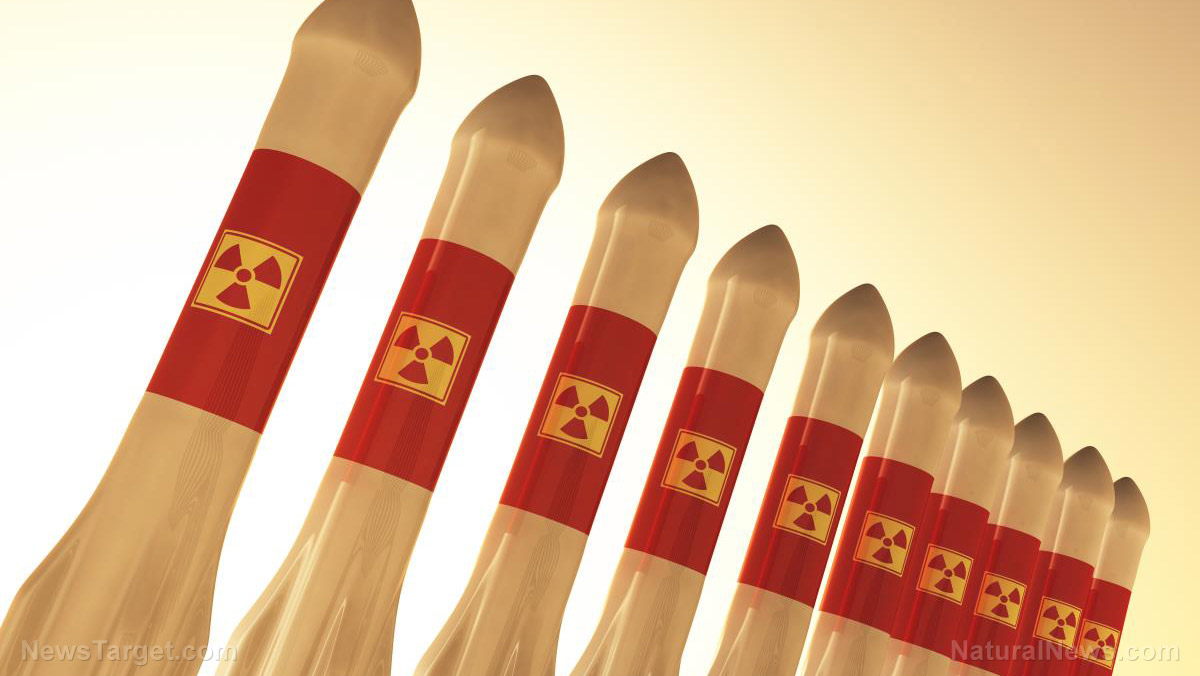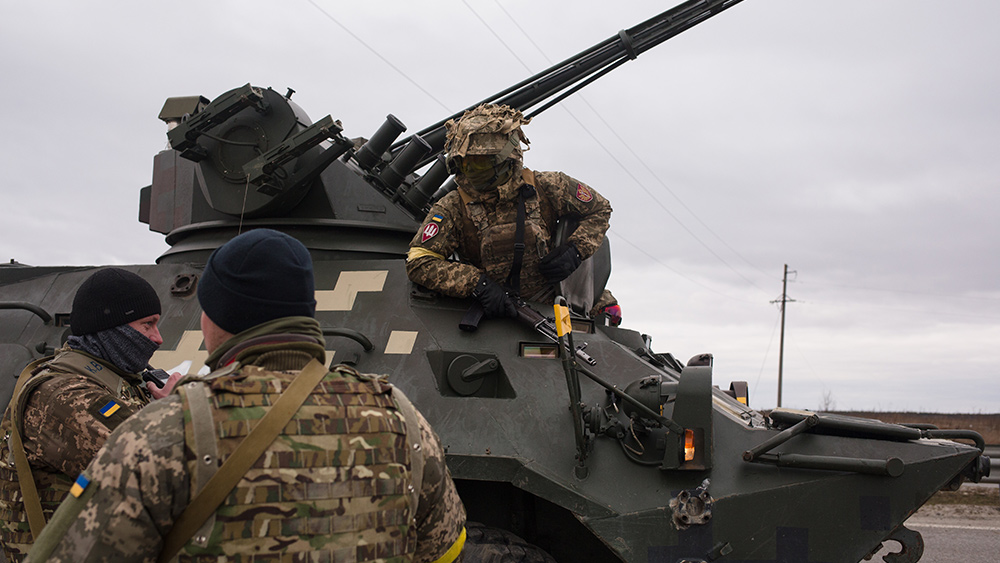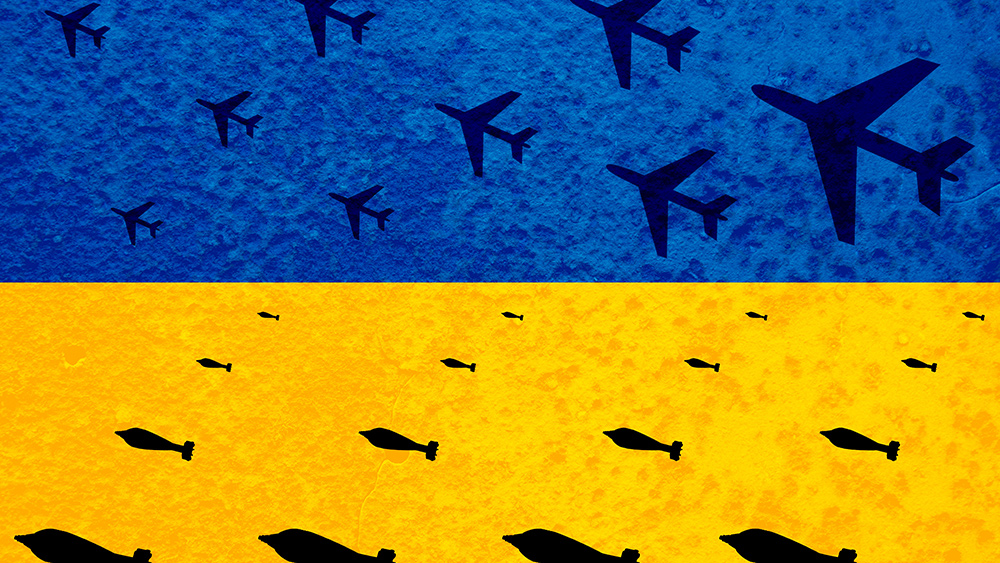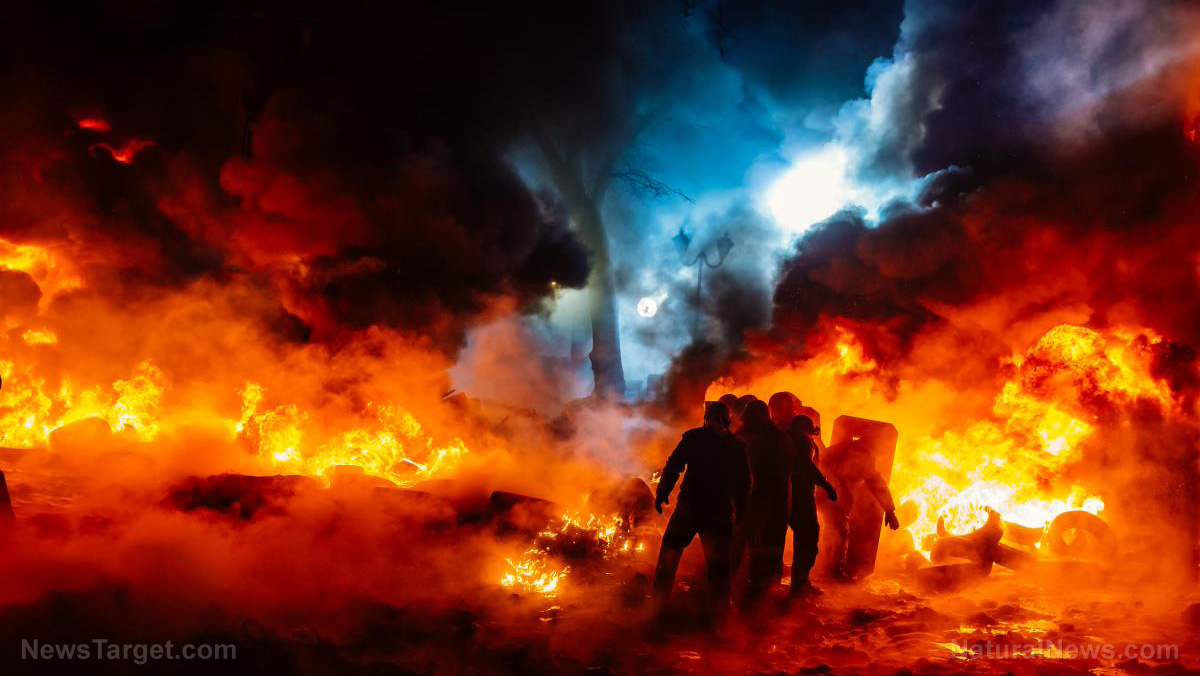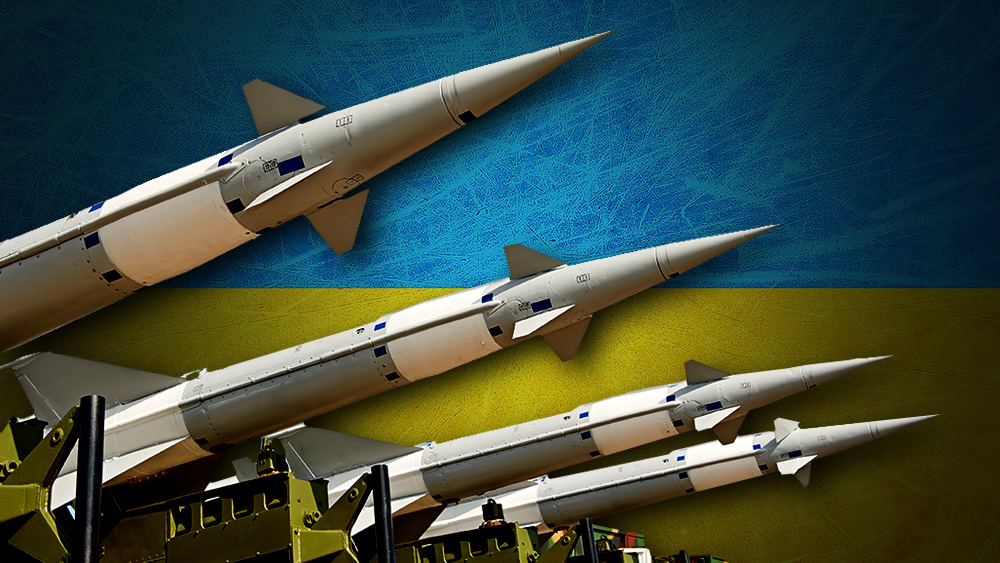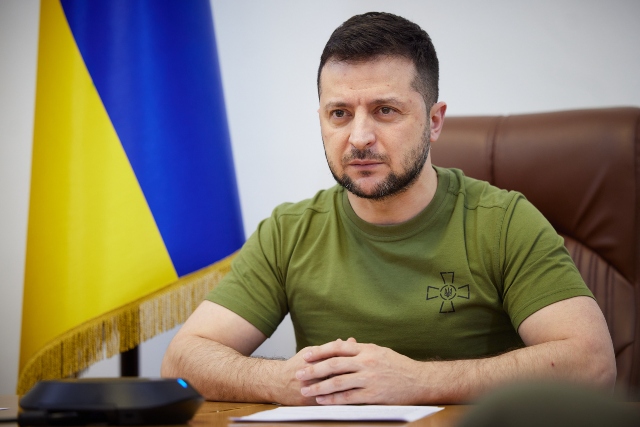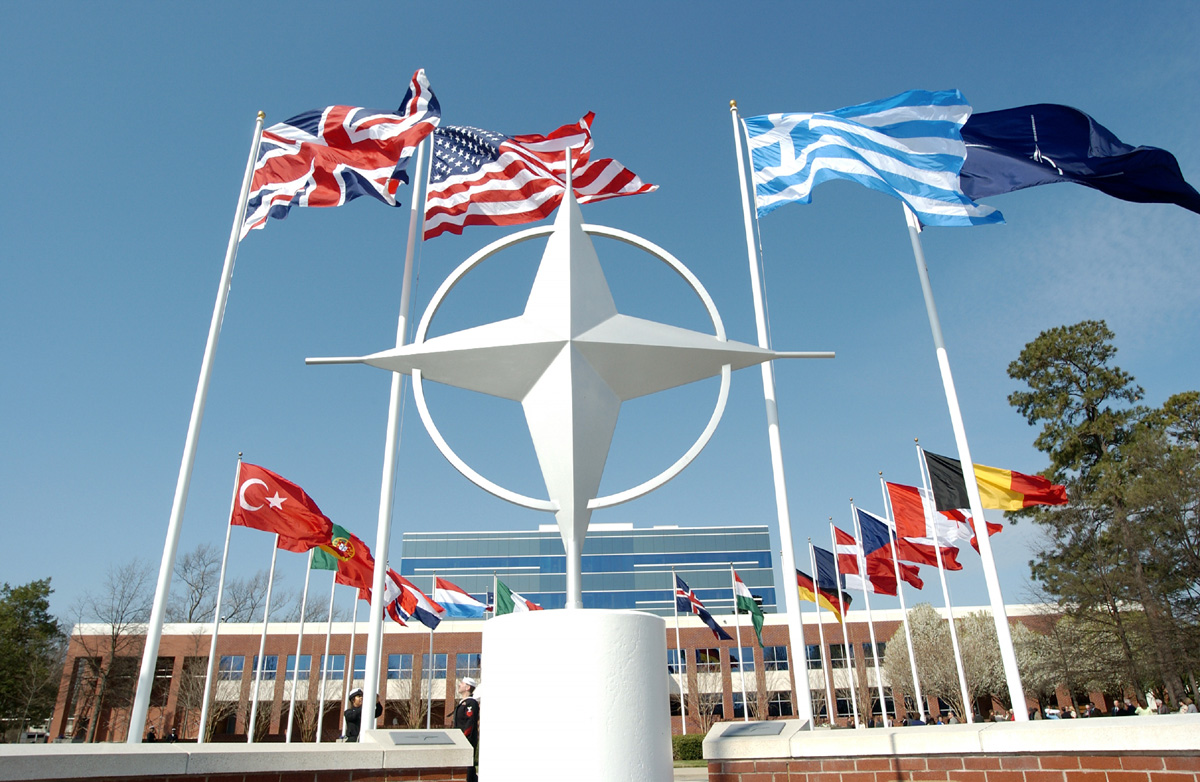Ukraine deploys autonomous DRONE SWARMS in combat, ushering in new era of AI warfare
09/04/2025 / By Belle Carter
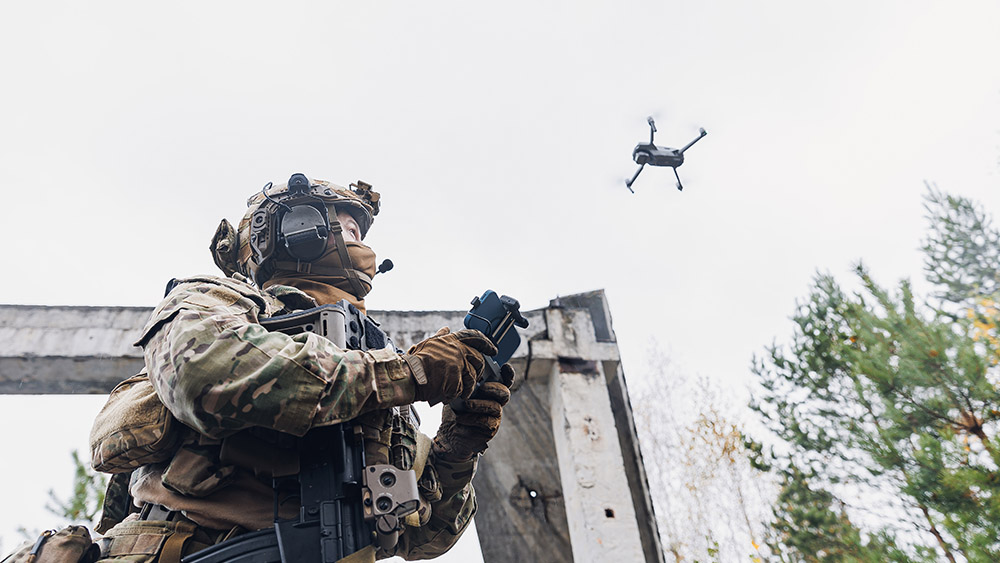
- Ukrainian forces have become the first to deploy autonomous drone swarms in active combat, developed by Ukrainian firm Swarmer. These drones can identify and strike targets without real-time human control, marking a significant advancement in AI-driven military tactics.
- The swarm technology allows groups of drones to communicate, adapt and execute missions independently once a target is designated. Reconnaissance drones scout enemy positions, while explosive drones adjust their attacks in real-time, reducing the need for constant operator input.
- The system has been used in hundreds of operations, primarily for mine-laying and targeted strikes against Russian positions. Each swarm operation requires only three personnel, significantly reducing the manpower needed compared to traditional drone operations.
- Ukraine’s deployment of drone swarms highlights a broader trend of militaries worldwide integrating AI into combat systems. The U.S., China, France, and Israel have experimented with similar technology, but Ukraine’s real-world application has outpaced these efforts.
- The rise of AI-driven combat systems raises ethical concerns, with the United Nations warning about the risks of lethal autonomous weapons. While Swarmer maintains that humans retain final authority over strikes, the line between human-controlled and fully autonomous warfare is becoming increasingly blurred, prompting debates over the future of war and the need for international regulations.
Ukrainian forces have deployed autonomous drone swarms capable of identifying and striking targets without real-time human control – the first confirmed use of such technology in active combat.
Developed by Ukrainian firm Swarmer, the system represents a major leap in artificial intelligence (AI)-driven military tactics, raising both strategic advantages and ethical concerns about the future of autonomous weapons.
“The swarm technology, tested and refined over the past year, allows groups of drones to communicate, adapt and execute missions independently once a target is designated. Unlike traditional drones, which require constant operator input, these AI-guided networks function cooperatively, with reconnaissance drones scouting enemy positions and explosive drones adjusting their attacks on the fly,” Brighteon.AI‘s Enoch explains.
Ukrainian military officials and Swarmer executives confirmed that the swarm system has been used in hundreds of operations, primarily for mine-laying and targeted strikes against Russian positions. While most missions involve small teams of three drones, tests have successfully linked up to 25 units, with plans to expand to swarms of 100 or more.
“You set the target and the drones do the rest. They work together, they adapt,” said Swarmer CEO Serhii Kupriienko. This autonomy reduces the need for human operators – a critical advantage for Ukraine, which faces a manpower disadvantage against Russia. One Ukrainian officer noted that swarm operations require just three personnel instead of nine, freeing up soldiers for other tasks.
Military analysts say Ukraine’s deployment marks a watershed moment, as no other nation has yet integrated autonomous swarms into active combat. While the U.S., China, France and Israel have experimented with similar technology, none have moved beyond controlled tests.
The emergence of drone swarms underscores a broader trend: Militaries worldwide are rapidly integrating AI into combat systems. The U.S. Department of Defense first demonstrated swarm capabilities in 2016, launching over 100 micro-drones from fighter jets. Israel reportedly used drone swarms in Gaza in 2021, though details remain scarce.
Yet Ukraine’s real-world application has outpaced these efforts. Swarmer’s engineers, operating from an unassuming suburban house, have refined the technology through battlefield trials – despite early challenges like network overloads from excessive drone communication.
Bob Tollast, a researcher at the Royal United Services Institute, noted that while Ukraine’s swarms are still small-scale, “even a small level of autonomous teaming would be impressive.” The next phase – coordinating hundreds of drones – could redefine modern warfare, enabling overwhelming attacks that evade traditional defenses.
Ethical dilemmas and the future of autonomous weapons
The rise of AI-driven combat systems has sparked intense debate over ethical boundaries. The United Nations has long warned about the risks of lethal autonomous weapons (LAWs), urging international regulations to prevent machines from making life-or-death decisions unchecked.
Swarmer insists that humans remain in the “kill chain,” retaining final authority over strikes. But as AI capabilities advance, the line between human-controlled and fully autonomous warfare blurs.
“Folks have been talking about the potential of drone swarms to change warfare for decades. But until now, they’ve been more prophecy than reality,” cautioned Zak Kallenborn, a drone warfare expert at King’s College London. (Related: Ukraine’s battlefield data is being used as LEVERAGE to train the future of military AI.)
For Ukraine, the immediate priority is battlefield survival. Yet the broader implications are undeniable: AI-powered swarms are no longer theoretical – they are here, reshaping conflict in ways that will force militaries, policymakers and ethicists to confront the future of war.
Visit MilitaryTech.news for more similar stories.
Watch this footage of a Ukrainian drone strike in Rostov.
This video is from The Prisoner channel on Brighteon.com.
More related stories:
Ukrainian drone attack hits Russian seaside city of Sochi.
Hungary condemns Ukrainian drone strike on Russian oil pipeline.
Sources include:
Submit a correction >>
Tagged Under:
AI, AI dangers, artificial intelligence, autonomous drones, chaos, collapse, dangerous, drone warfare, drone wars, drone watch news, future science, future tech, Glitch, military tech, military technology, Russia-Ukraine war, Swarmer, Ukraine, Ukraine-Russia War, violence, war ethics, weapons technology, WWIII
This article may contain statements that reflect the opinion of the author
RECENT NEWS & ARTICLES
COPYRIGHT © 2018 MILITARYTECHNOLOGY.NEWS
All content posted on this site is protected under Free Speech. MilitaryTechnology.news is not responsible for content written by contributing authors. The information on this site is provided for educational and entertainment purposes only. It is not intended as a substitute for professional advice of any kind. MilitaryTechnology.news assumes no responsibility for the use or misuse of this material. All trademarks, registered trademarks and service marks mentioned on this site are the property of their respective owners.



